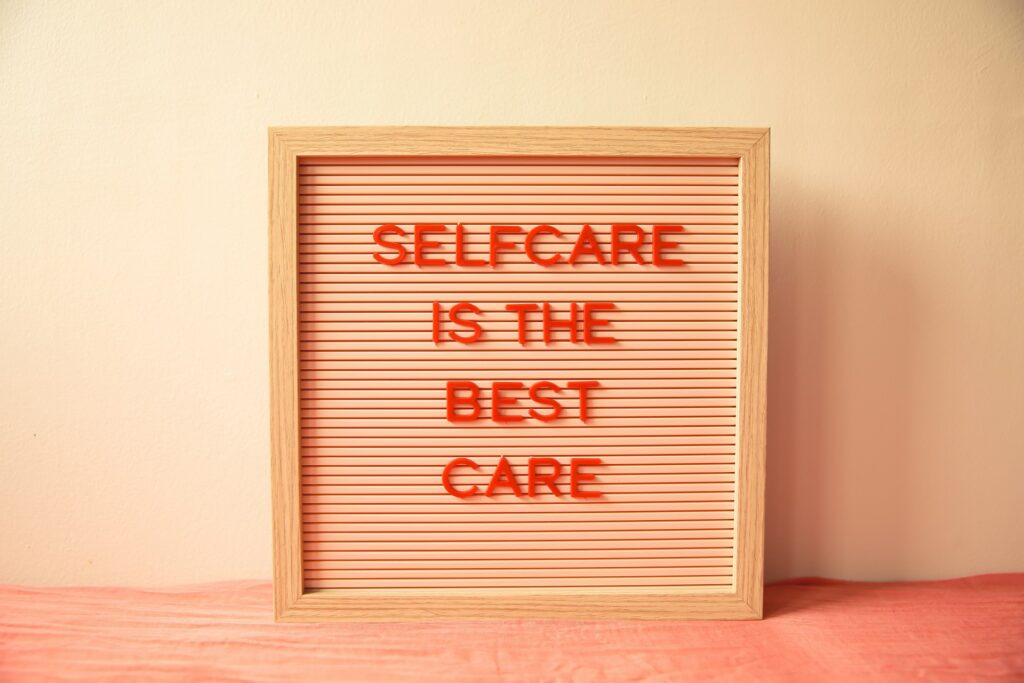Depression or low mood can make each task feel heavy. Small acts still help. You can build a simple plan that fits your day. Start with the basics and keep steps small. Track what helps so you can repeat it. Share one goal with a trusted person. Use tools that calm your body and guide your focus.
When your plan stays clear, you can move even on slow days. This guide shows how to pick steps, set cues, and use support. It also shows how to work with energy shifts and how to nudge sleep and food. With steady effort, progress adds up. In this article, we will use depression self care as the frame and show ways to try it today.
Daily actions that support mood and energy
Daily routine can affect mental health. Starts where you are. Pick one small action for morning, one for midday, and one for night. Morning can begin with light. Open a shade. Step outside for two minutes. Midday can include a brief walk or stretch. Night can include a short screen break. Set a cue for each act.
Link the screen break to brushing teeth. If you seek more structured help, explore care through Fairland Recovery Center. Keep a simple log. Write the action and a one to three rating for mood and energy. After a week, keep what helps. Drop what drains you. Add one new action next week. Over time, these steps build routine. Routine lowers choice load and frees energy for care.
How to set goals that match your current capacity
Goals land best when they match your energy. Pick one goal for the week. Make it concrete and small. “Walk five minutes after lunch on three days.”
Put your goal on your calendar. Use a check mark on days you do it. If you miss a day, restart the next day. Aim for progress, not perfect. A clear plan reduces stalls and helps momentum grow.
Gentle movement for low mood support
Your body can lift your mind. Short bouts work well. Try ten minutes of brisk walking. Add light strength twice a week. Pick two moves. Squats and wall push‑ups. Do two sets of eight. End with a slow exhale set. Four seconds in. Six out. Three minutes total. Movement helps sleep and focus. It also builds a sense of choice. If you want guidance, connect with Summit Mental Health Treatment. Use a simple rule. Never skip two days in a row. This keeps the habit alive without pressure. Include one outdoor session per week if you can. Sunlight supports rhythm and mood. Mention your plan to a friend. A quick text can keep you honest.
Food and sleep basics for steady mood
Stable energy supports steady feelings. Build meals around protein, fiber, and healthy fats. Keep water close. Aim for a steady wake time and a steady sleep time. Dim lights at night. Park your phone outside your bed. If naps help, keep them short and before late afternoon. Keep a two week note on meals and sleep. Track how you feel in the morning and midafternoon. Look for links. Adjust one thing at a time. Slow change sticks.
Social contact that feels safe and light
Connection can ease low moods. Keep it simple. Set a ten minute call twice a week with a friend. Meet for a short walk when you can. Use a script to start. “One win, one ask.” Reduce guesswork and make it easy to show up. Join a peer group if that fits. Protect your energy. Say yes to short plans. Say no to draining events. Boundaries keep you safe while you heal. Small, safe links can lift mood without extra strain.
Thought skills that help you shift state
Thoughts can pull the mood down. You can reply with facts and small acts. Write a sticky thought. Label it as a guess or a fact. If it is a guess, write two kinder guesses. If it is a fact, pick one five minute action. Send one email. Fold one shirt. Step outside for one minute. Use these steps at the first sign of a dip. Catch it early so it stays small. Over time, these skills get faster and feel natural.
Conclusion
Use small steps, clear cues, and honest support. Keep what helps and drop what does not. Share one goal and track wins. Your plan can grow with you.



